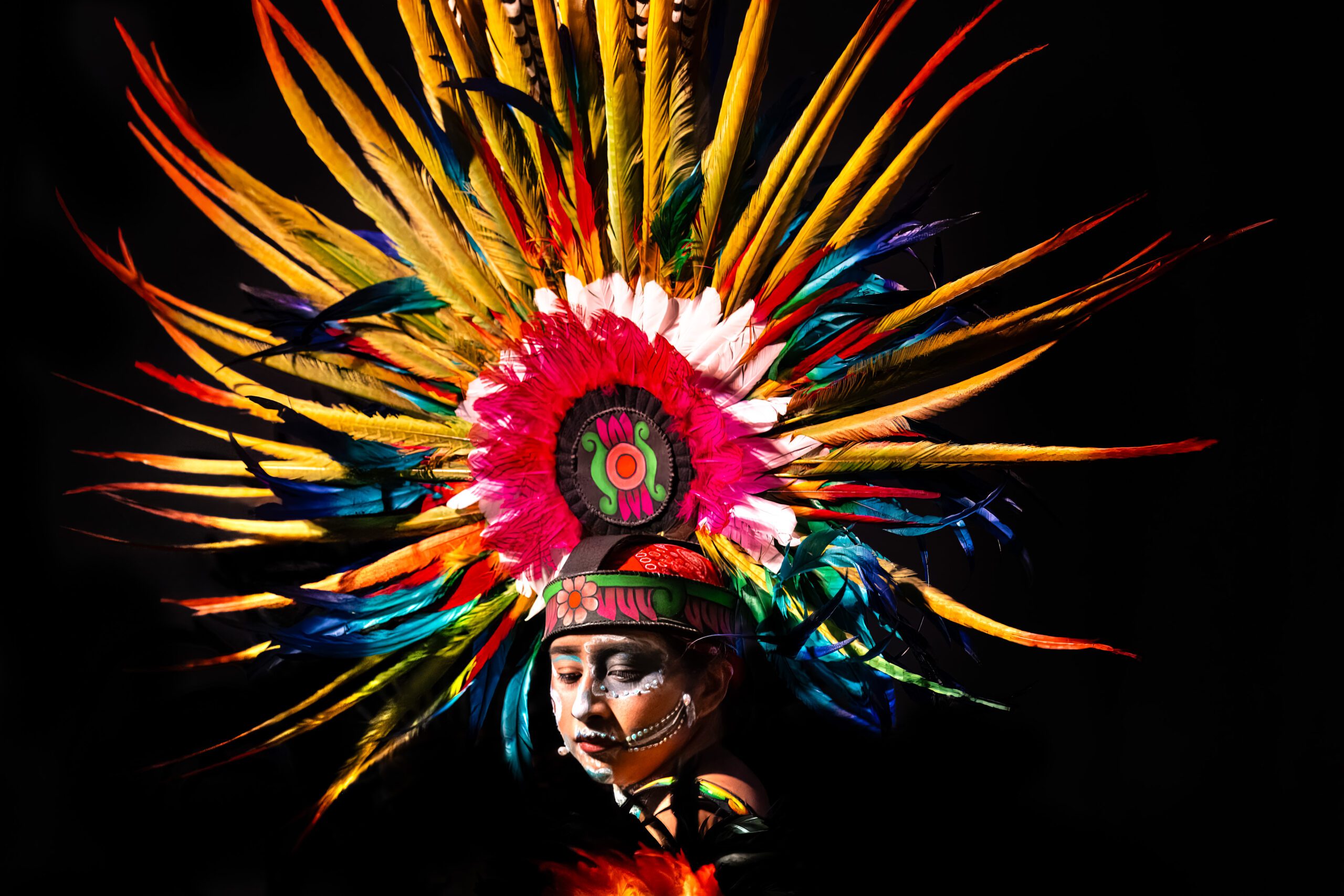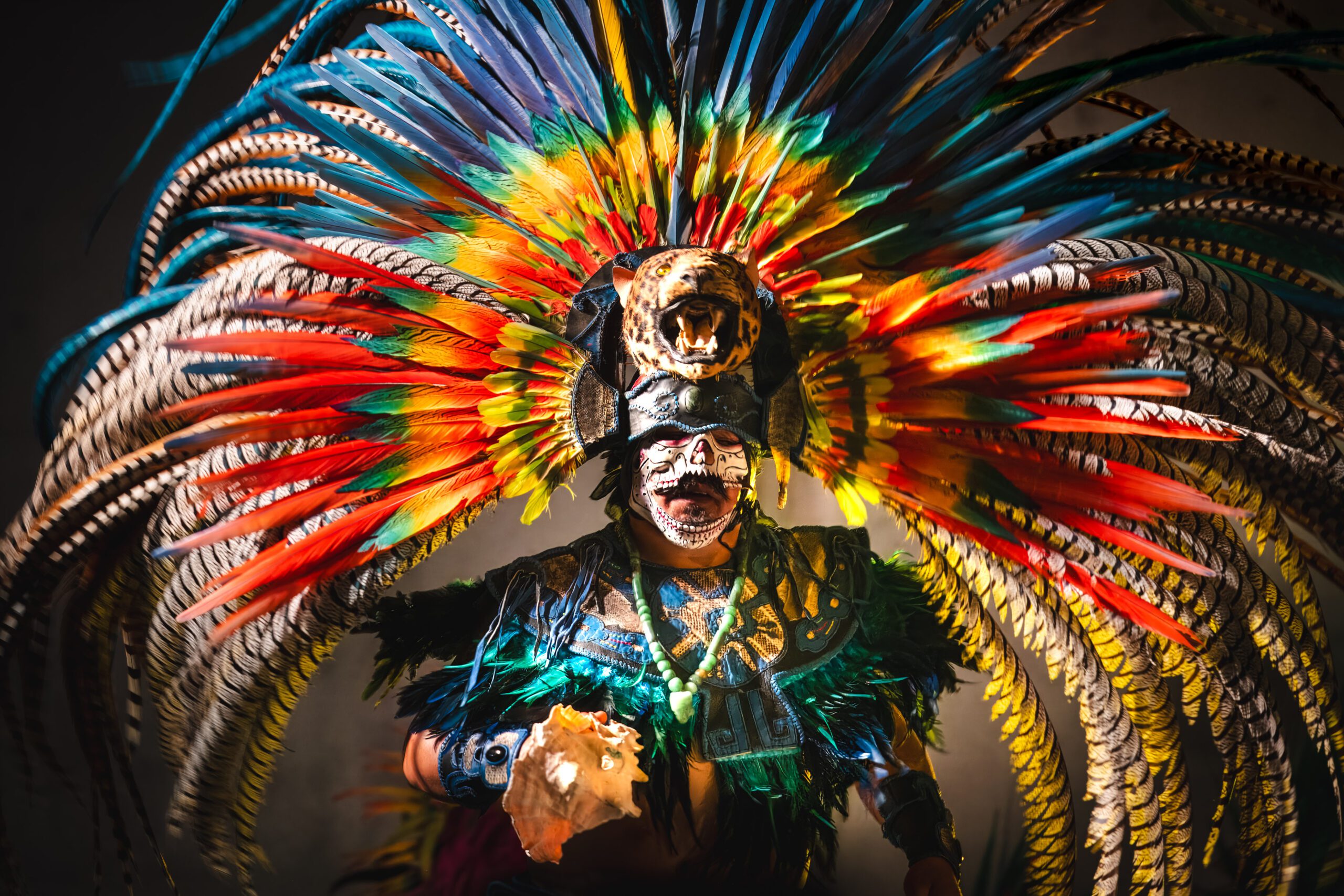
Austin’s Waterloo Park, November 1, 2024—On a cool fall evening, the beat of Danza Azteca Guadalupana’s drums reverberated through the streets, drawing in the crowd as members gathered to observe Día de los Muertos. This annual celebration serves as both a remembrance of loved ones and a way to preserve heritage. Among the dancers was Justin Heron, known by his tribal name, Nahui. His Apache and Otomi ancestry seemed to guide his steps as he danced, connecting him to the many generations that came before him. “We are embodying our ancestors as we dance,” Heron says. “It’s a gift to the people around us, just by existing in our true form, a reflection we’re able to share while we dance, while we scream, while we speak.”
Danza Azteca is rooted in the traditions of the Mexica people of central Mexico and was once central to rituals, agriculture, and community gatherings. The dance connected people to the natural world and to the divine, with movement as a tribute to deities and the changing seasons. In the 16th century, colonial forces sought to dismantle these traditions, banning Indigenous dances and the drums that underscored them—drums like the huehuetl and teponaztli, were viewed as symbols of resistance. Yet, over time, Danza Azteca persisted, adapting to survive.
Today, Danza Azteca remains a powerful tradition, connecting people like Heron and Jose Flores to their ancestry and community. It’s an art form that’s been kept alive for new generations and, in a city like Austin, is an expression of identity.
The dance itself is truly a sensory experience. Traditional instruments set the rhythm, with the deep beat of the huehuetl and teponaztli drums, the rattle of ayoyotes around dancers’ ankles, and the resonant call of conch shells. At times, the dancers’ voices cry out together, amplifying the drums’ power and drawing both dancers and audience into a shared rhythm that bridges present and past, connecting those who dance with the spirit of their ancestors.

For today’s dancers, the practice is much more than a display; it’s an affirmation of their past and a commitment to future generations. Jose Flores, whose father founded Austin’s Danza Azteca Guadalupana group over a decade ago, has been dancing since he was a child. “We have a lot of kids here,” says Flores. “We’re showing them, ‘Hey, this is what this god meant, this is what your outfit means.’ It’s something we really want to keep doing.”
For Flores and Heron, each performance is a shared experience that sustains and celebrates the beautiful layers of their sacred history. As Heron says, “My hope is to instill pride and strength in our history, in who we are.”
As night descends on Waterloo Park, the sounds of the drums carry across the city, grounding this modern landscape in an ancient legacy. For these dancers, Danza Azteca isn’t simply a tradition but a way to make their culture and history part of Austin’s future.